Lemon Pound Cake
This post may contain affiliate links. Read my full disclosure policy.
This lemon pound cake is the ultimate dessert for lemon lovers.
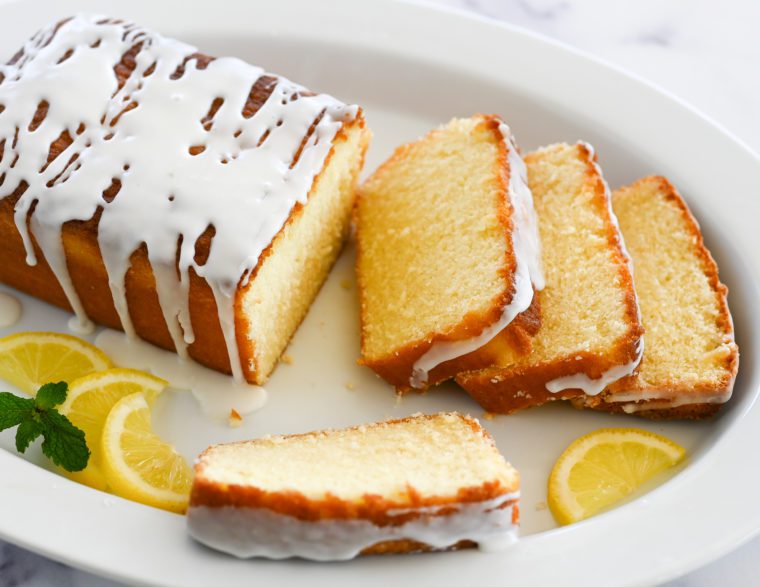
Calling all lemon lovers! This lemon pound cake is a dessert made just for you. The recipe incorporates both lemon zest and lemon juice into the cake batter, infusing the cake with a lovely lemon flavor. But the real magic happens after baking — the cake is generously doused with lemon syrup and then drizzled with a tart lemon glaze, delivering an intense burst of lemon flavor with every bite. The recipe yields two ultra-moist loaves that stay fresh for days on the countertop or can be frozen for later. If you’d like to switch things up, try my popular lemon poppyseed cake and lemon blueberry pound cake variations. A big thank you and shoutout to Karen Tannenbaum, one of my longtime readers, for inspiring this wonderful recipe!
What You’ll Need To Make Lemon Pound Cake
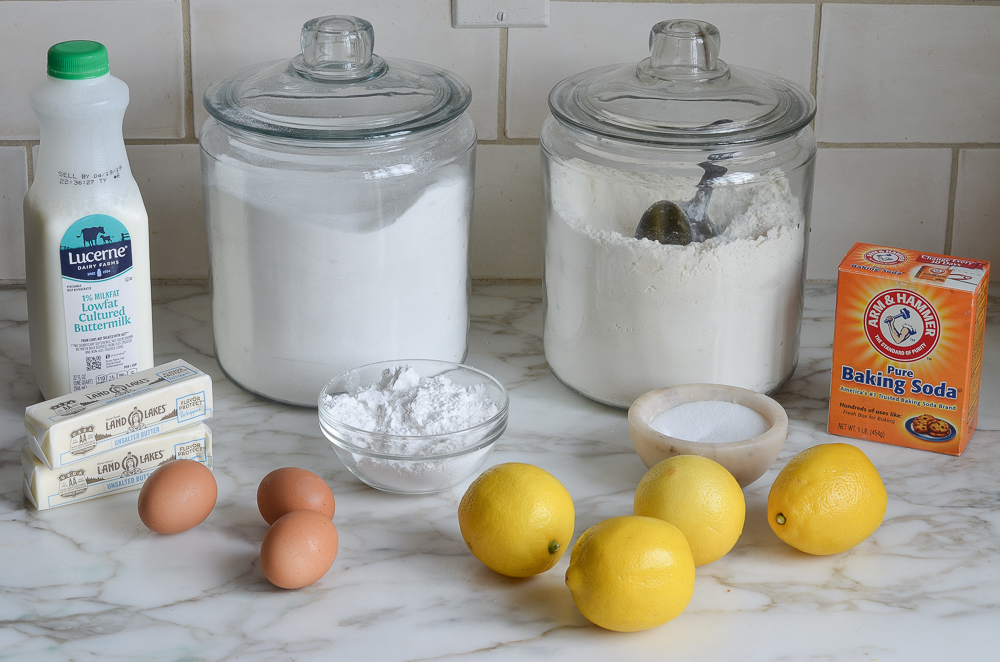
STEP-BY-STEP INSTRUCTIONS
Start by zesting and juicing your lemons. And be sure you zest the lemons first, otherwise, it will be impossible once they are juiced. The best tool for zesting is a rasp grater but any fine grater will do.
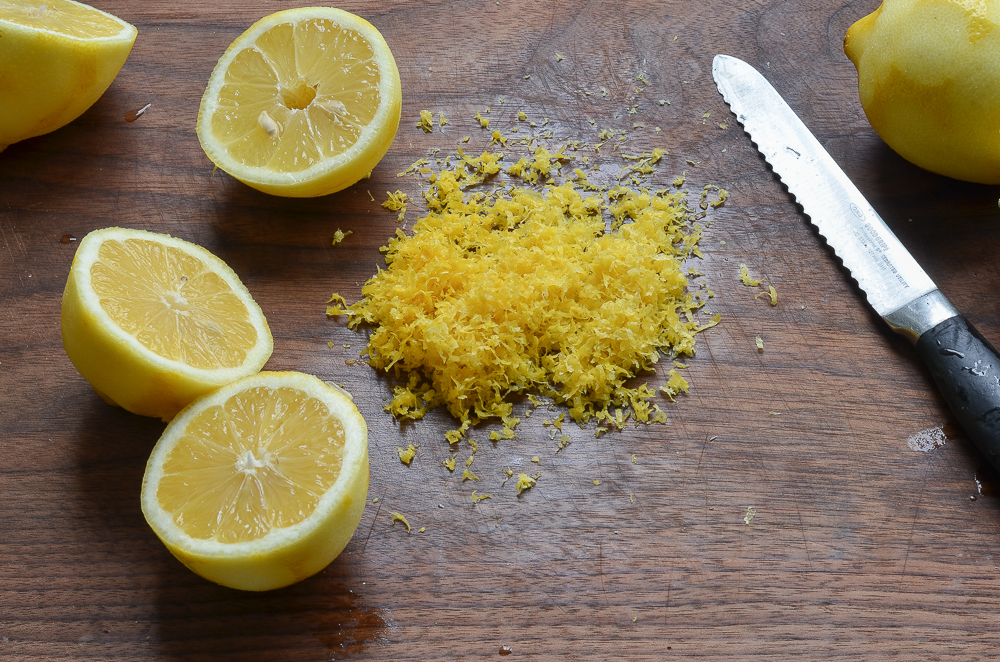 Combine the flour, salt, and baking soda in a mixing bowl. I always add dry ingredients in little piles so I don’t forget what I’ve already added.
Combine the flour, salt, and baking soda in a mixing bowl. I always add dry ingredients in little piles so I don’t forget what I’ve already added.
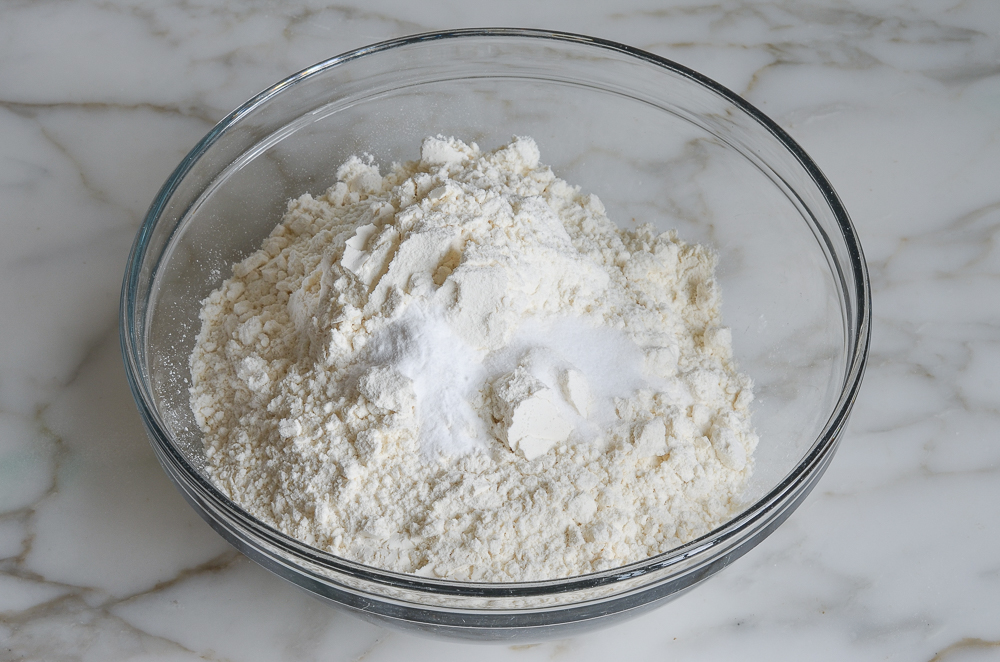 Whisk and set aside.
Whisk and set aside.
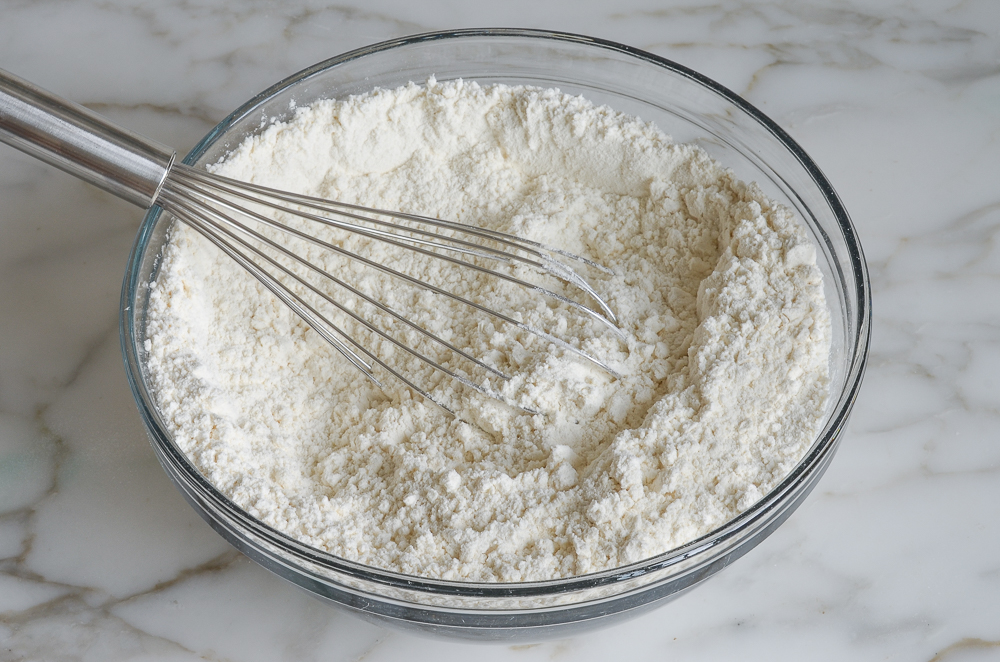
In another bowl, whisk together the buttermilk, lemon zest, and lemon juice. Set aside.
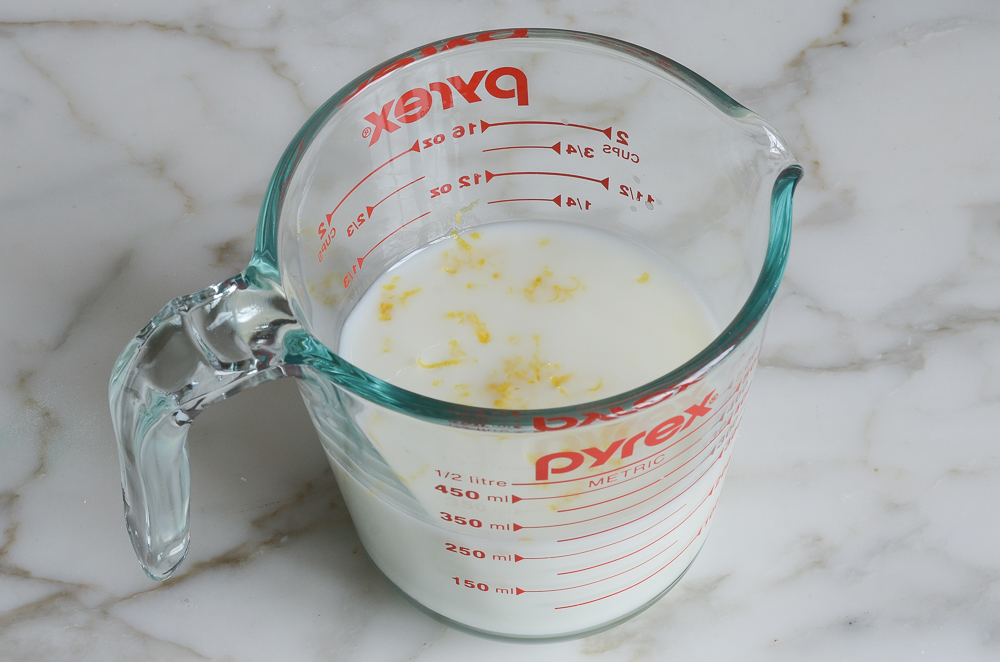
In the bowl of an electric mixer fitted with the paddle attachment (or beaters), cream the butter and sugar on medium speed until light and fluffy, 3 to 4 minutes.
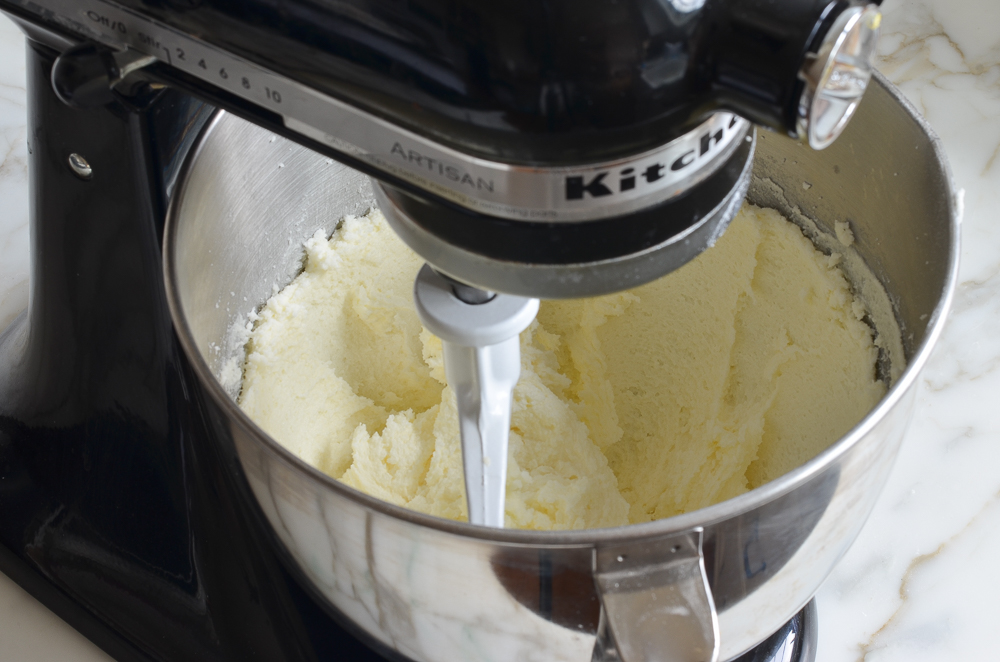
Scrape down the sides of the bowl, then beat in the eggs one at a time, beating well after each addition. Scrape down the sides of the bowl again.
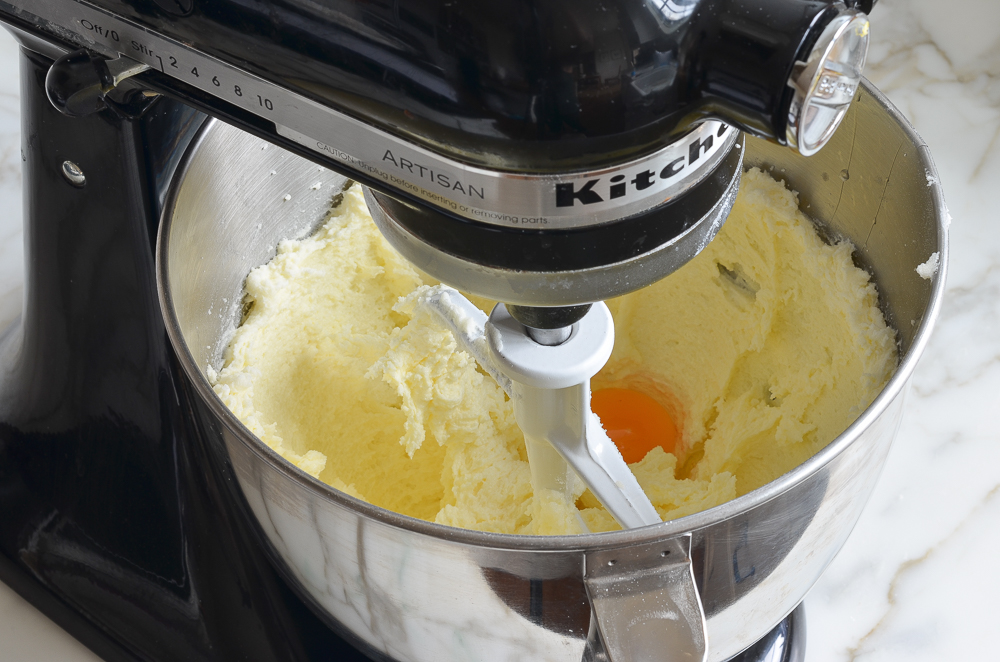
With the mixer on low speed, beat in one-quarter of the flour mixture, then one-third of the buttermilk mixture. Beat in another quarter of the flour, then another third of the buttermilk mixture. Repeat with another quarter of the flour and the remaining buttermilk mixture. Finally, beat in the remaining flour mixture.
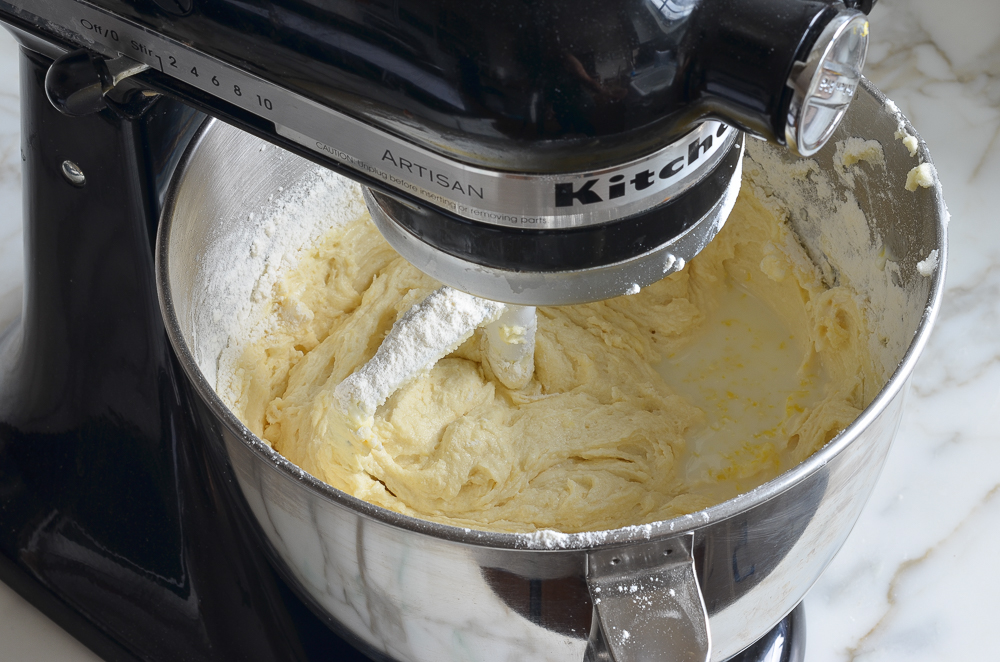
Scrape down the sides of the bowl, and give a quick mix to make sure all of the ingredients are well-incorporated.
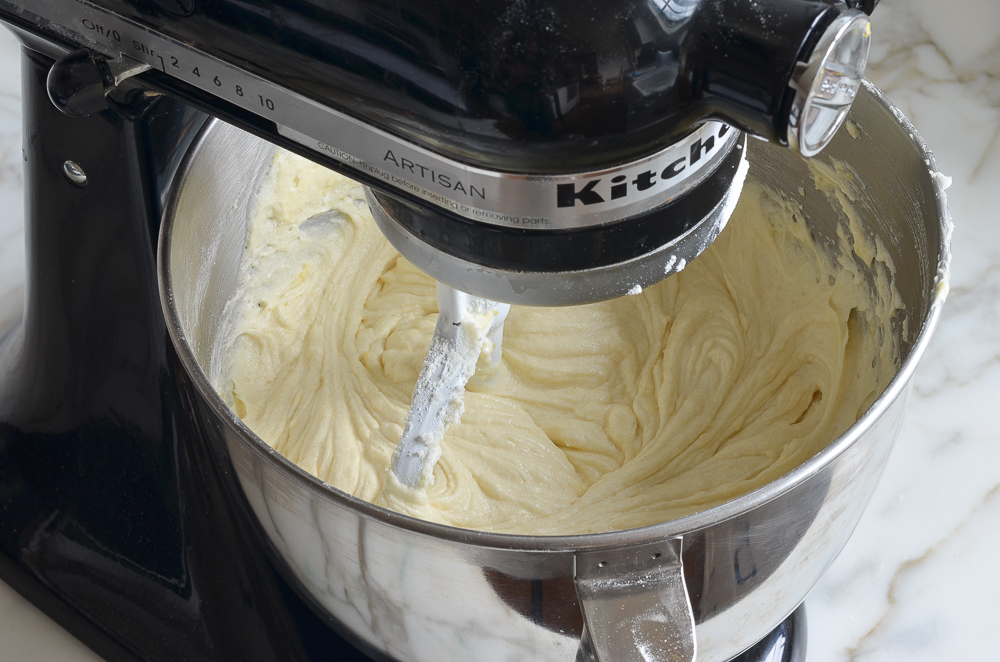
Transfer the cake batter to the prepared pans and smooth with a rubber spatula.
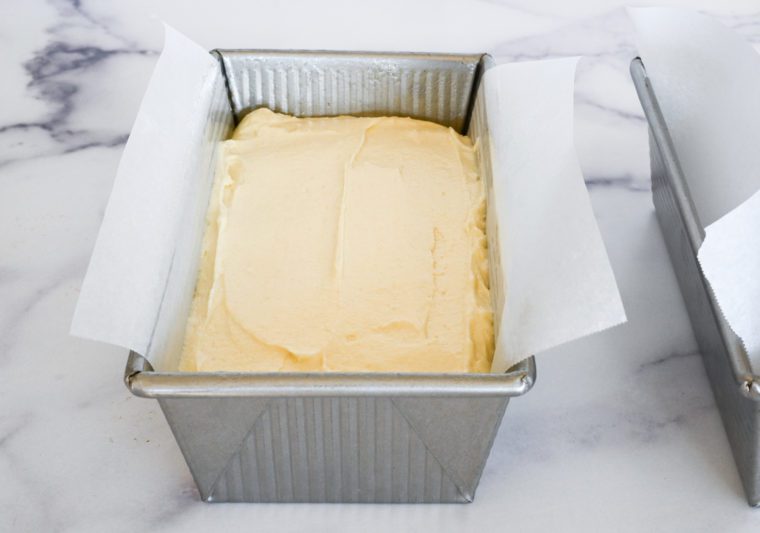
Bake for 55 to 65 minutes, or until the top is golden and a tester comes out clean.
Set the cakes on a cooling rack, and cool in the pans for 10 minutes.
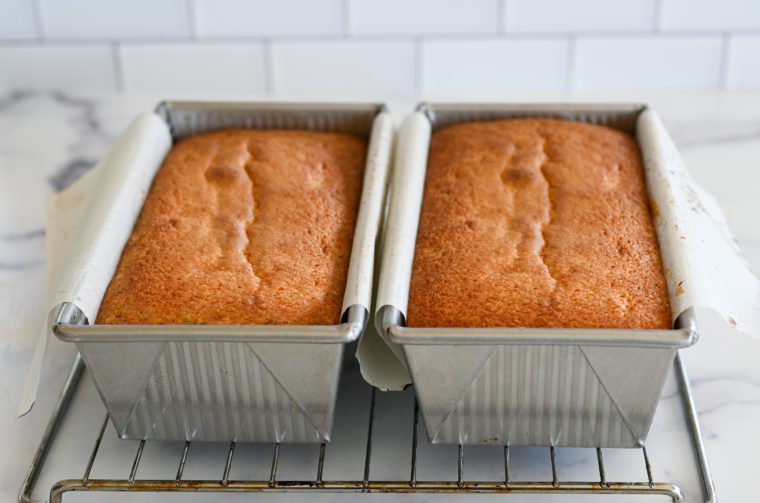
Carefully run a knife along the unlined sides of the pans to loosen the cake from the pan. Using the parchment slings, lift the cakes out of the pans and place onto the rack, leaving the parchment paper in place under the cakes. Let cool for about 1 hour.
When the cakes are almost cool, make the syrup. Combine the water and sugar in a saucepan and bring to a boil. Remove from the heat and stir in the lemon juice.
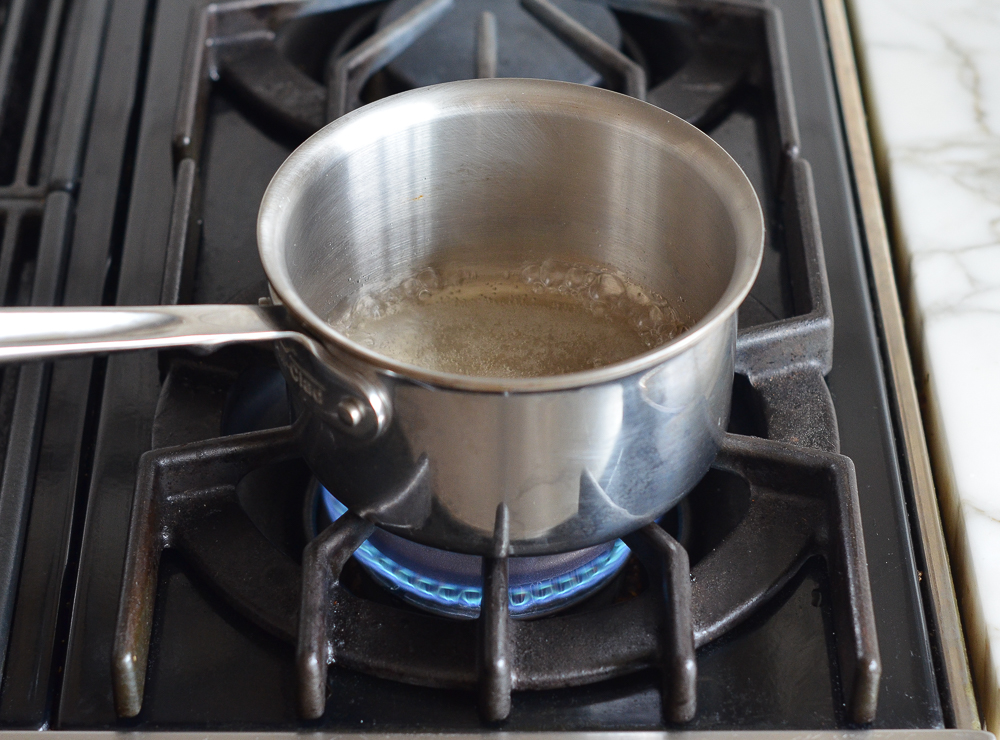
To make the glaze: in a medium bowl, whisk together the confectioners’ sugar and lemon juice. Add more confectioners’ sugar or lemon juice as necessary to make a thick but pourable glaze (it should be a little thicker than you’d think, about the consistency of molasses or honey).
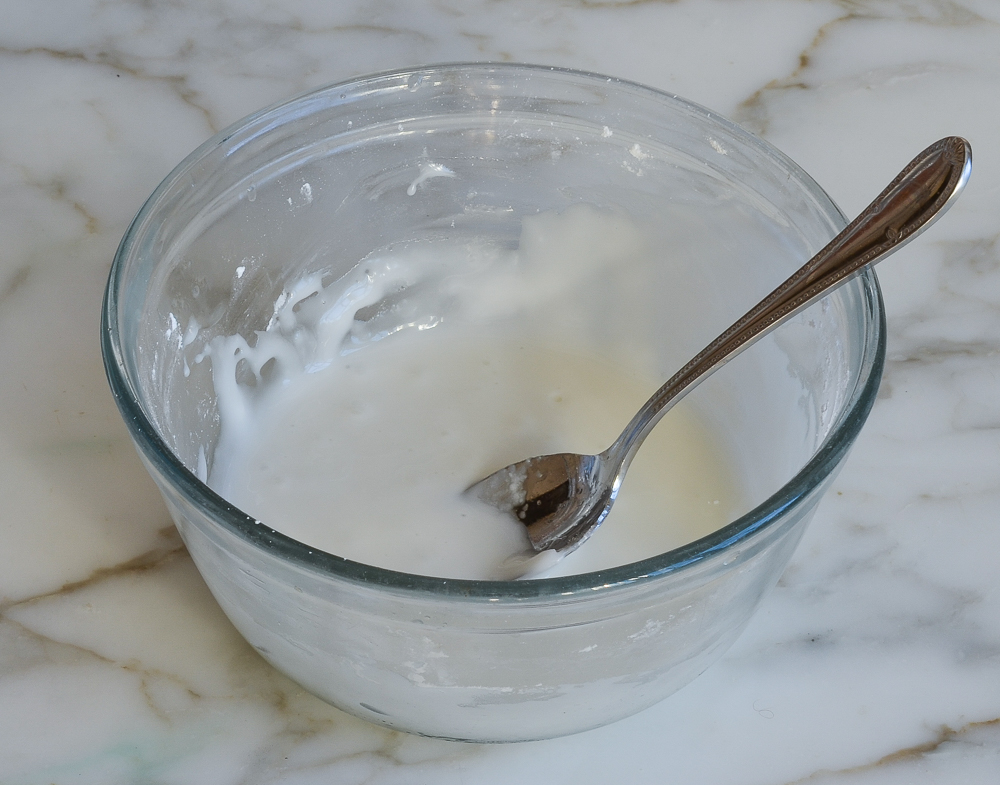
When the cakes are cool, carefully transfer them to serving platters. Gradually brush the warm syrup all over the cakes, including the sides, letting it soak in as you go.
Finally, spoon the glaze over the top of the cake, letting it drip down the sides.
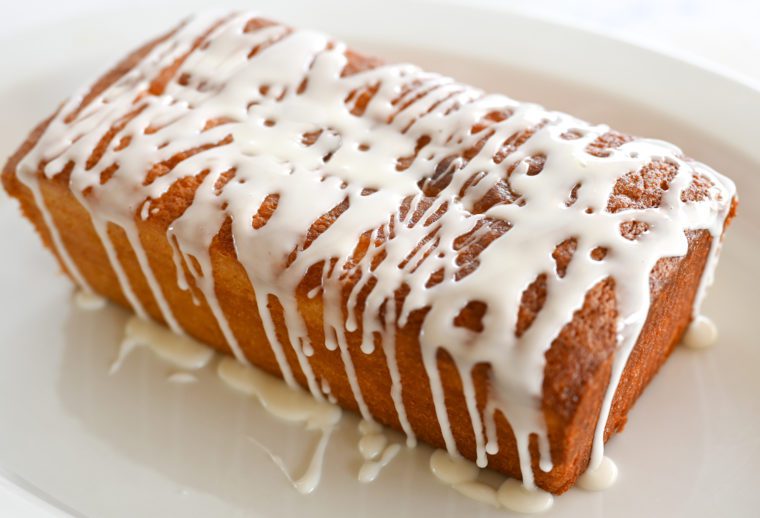
Let the cakes sit for about one hour to allow the glaze to set before serving.
How To Freeze Lemon Pound Cake
The cakes can be frozen without the glaze for up to 3 months. After they are completely cooled, double-wrap them securely with aluminum foil or plastic freezer wrap, or place them in a heavy-duty freezer bag. Thaw overnight on the countertop before serving. (Add the syrup before the cake is frozen and add the glaze after the cake is thawed.)
Note: This recipe was updated in 2022; to see the original version, click here.

You May Also Like
- Warm Lemon Pudding Cakes
- Lemon Poppy Seed Muffins
- Lemon Bars
- Cake Pans to Cookie Sheets: 16 Essential Baking Pans
Lemon Pound Cake
This lemon pound cake is the ultimate dessert for lemon lovers.
Ingredients
For the Cake
- 3 cups all-purpose flour, spooned into measuring cup and leveled-off with a knife
- ½ teaspoon baking soda
- ½ teaspoon salt
- 1 cup buttermilk (low-fat is fine) (see note)
- 2 tablespoons (packed) grated lemon zest (see note)
- 2 tablespoons fresh lemon juice
- 2 sticks (1 cup) unsalted butter, softened
- 2¼ cups granulated sugar
- 3 large eggs
For the Syrup
- 2 tablespoons water
- 2 tablespoons granulated sugar
- 2 teaspoons fresh lemon juice
For the Glaze
- 1 cup confectioners' sugar
- 2 tablespoons fresh lemon juice
Instructions
- Preheat the oven to 350°F and set an oven rack in the middle position. Spray two 8½ x 4½-inch loaf pans with nonstick cooking spray. Line the long sides of the pans with parchment paper “slings” and spray lightly with nonstick cooking spray again.
- In a medium bowl, whisk together the flour, baking soda and salt. Set aside.
- In another bowl, whisk together the buttermilk, lemon zest and lemon juice. Set aside.
- In the bowl of an electric mixer fitted with the paddle attachment (or beaters), cream the butter and sugar on medium speed until light and fluffy, 3 to 4 minutes. Scrape down the sides of the bowl, then beat in the eggs one at a time, beating well after each addition. Scrape down the sides of the bowl again.
- With the mixer on low speed, beat in one-quarter of the flour mixture, then one-third of the buttermilk mixture. Beat in another quarter of the flour, then another third of the buttermilk mixture. Repeat with another quarter of the flour and the remaining buttermilk mixture. Finally, beat in the remaining flour mixture. Scrape down the sides of the bowl, and give a quick mix to make sure all of the ingredients are well-incorporated.
- Divide the thick batter into the prepared pans and smooth with a rubber spatula. Bake for 55 to 65 minutes, or until the top is golden and a tester comes out clean.
- Set the cakes on a cooling rack, and cool in the pans for 10 minutes. Carefully run a knife along the unlined sides of the pans to loosen the cake from the pan. Using the parchment slings, lift the cakes out of the pans and place onto the rack, leaving the parchment paper in place under the cakes. Let cool for about 1 hour.
- When the cakes are almost cool, make the syrup. Combine the water and sugar in a saucepan and bring to a boil. Remove from the heat and stir in the lemon juice.
- When the cakes are cool, carefully transfer them to serving platters.
- Gradually brush the warm syrup all over the cakes, including the sides, letting it soak in as you go.
- To make the glaze: in a medium bowl, whisk together the confectioners' sugar and lemon juice. Add more confectioners' sugar or lemon juice as necessary to make a thick but pourable glaze (it should be a little thicker than you'd think, about the consistency of molasses or honey). Spoon the glaze over the top of the cake, letting it drip down the sides. Let the cakes sit for about one hour to allow the glaze to set before serving.
- Note: If you’d like to make your own buttermilk, check out the easy method here.
- Note: You'll need 4 to 5 large lemons for the entire recipe.
- Make-Ahead/Freezer-Friendly Instructions: The cakes can be made up to 1 day ahead of time and stored in a cake dome or airtight container at room temperature. They can also be frozen (without the final glaze) for up to 3 months. After they are completely cooled, double-wrap securely with aluminum foil or plastic freezer wrap, or place them in a heavy-duty freezer bag. Thaw overnight on the countertop before serving. (Add the syrup before the cake is frozen and add the glaze after the cake is thawed.)
Nutrition Information
Powered by ![]()
- Per serving (16 servings)
- Serving size: 1 slice
- Calories: 313
- Fat: 7g
- Saturated fat: 4g
- Carbohydrates: 59g
- Sugar: 40g
- Fiber: 1g
- Protein: 4g
- Sodium: 143mg
- Cholesterol: 51mg
This website is written and produced for informational purposes only. I am not a certified nutritionist and the nutritional data on this site has not been evaluated or approved by a nutritionist or the Food and Drug Administration. Nutritional information is offered as a courtesy and should not be construed as a guarantee. The data is calculated through an online nutritional calculator, Edamam.com. Although I do my best to provide accurate nutritional information, these figures should be considered estimates only. Varying factors such as product types or brands purchased, natural fluctuations in fresh produce, and the way ingredients are processed change the effective nutritional information in any given recipe. Furthermore, different online calculators provide different results depending on their own nutrition fact sources and algorithms. To obtain the most accurate nutritional information in a given recipe, you should calculate the nutritional information with the actual ingredients used in your recipe, using your preferred nutrition calculator.

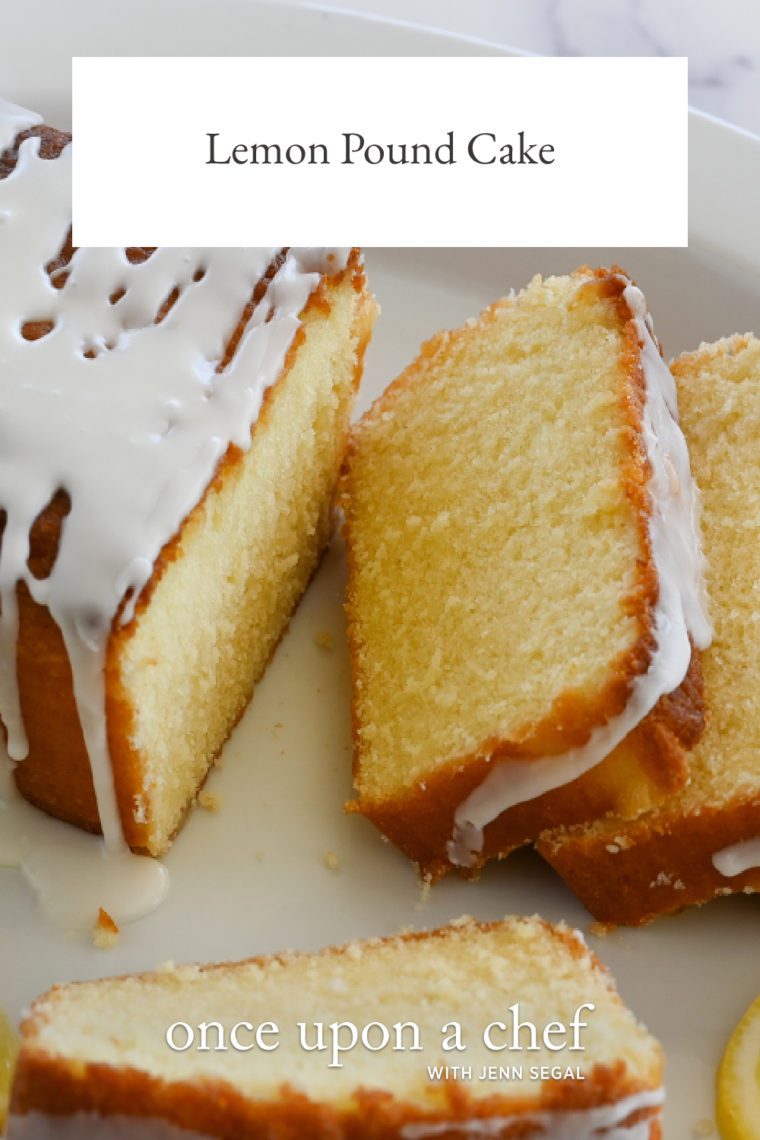
Awesome recipe, I always give 1 cake away & there’s never a crumb left by 8pm so I’m told. I’m really a lemon cake fiend & I at least double the zest & FRESH lemon juice parts 1,2&3 of recipe. Glaze to my taste xtra thick & syrup adds nice kick.
This was a little too sweet for me, but it needs the soaking syrup and – in my opinion – the glaze. How much can I reduce the sugar in the cake before it compromises the structure?
Thanks
Hi Lora, You can get away with cutting the sugar by 1/2 cup. 🙂
I kept thinking, “that’s not enough lemon juice to make it super lemony like we love!” SO wrong! It was perfect! I made it with a gluten free flour (commercial 1-to-1 type) and wasn’t sure how it would turn out but it was amazing. I froze one to see how that would work out and can’t wait to try it.
Hi Jenn –
I’ve got these pound cakes in the oven now.
I’d love to see a post about using the convection setting on ovens. I’ve got a beautiful Fisher & Paykel oven and I’d love to use it to its fullest potential. All I can find when I google “how to cook with convection oven” is basically that you reduce the temp by 25 degrees and some things work better than others. Not very helpful. Since you’re a professional baker, can you give us some insight?
Thanks,
Lora
Hi Lora, I always develop and publish my recipes using the regular setting on my oven (because many people don’t have convection settings on their ovens), so I really don’t have any experience with the convection setting. I’m sorry I can’t be more helpful!
The book that came with my convection oven says do NOT use the convection setting for cakes. For cookies, bars etc the convection setting is great; just be sure to lower the temperature called for by 25 degrees and bake for the least amount of time suggested. Hope this helps Lora.
I agree with not using convection for delicate batters. It would be a good idea to check her stove’s manual before reducing the temperature, however. For example, my oven automatically reduces by 25 degrees when I select Convect Bake.
Decrease the temp by 50° for convection oven!
I made these for Christmas gatherings. I didn’t make the glaze as I don’t like overly sweet desserts. It was very good the same day and even more lemony the next. I will definitely make it again.
Hi Jen!
I have a bag of Meyer lemons so I would like to do this recipe but in a Bundt pan. Do you have any suggestions on how to modify your recipe for a Bundt pan? Also, would you recommend adding poppyseeds?
I made your Rum cake recipe TWICE over the holidays and it was so delicious!!!! Also I made your beet and mixed green salad. It was a hit!
Hi Jennifer, This would be delicious with poppy seeds — I actually have a recipe for a bundt version with poppy seeds, so I’d go that route. Also so glad you’ve enjoyed some of the other recipes over the holidays!
Hi Jenn,
If I wanted to make your lemon cake without poppyseeds in a Bundt pan, could I use the Bundt version and just omit the poppyseeds?
Sure!
I have made this recipe twice and LOVE IT! I work in a hospital and brought the cake in for all, individually sliced and placed in plastic bags. Staff loved it and were coming back for seconds, indicating it was the best lemon pound cake ever! When making it the first time, I was not sure of the lemon syrup that goes on the cake, but make the recipe exactly as you wrote it…so glad I did !! Crisp, bold lemony taste and SO moist!!!!
Do you have the recipe for one loaf please.
Hi Esther, you can just cut all the ingredients in half. Hope you enjoy if you make it!
This is a lovely pound cake; I should say cakes since it does indeed make two full cakes. Made without any modification, this pound cake does indeed deliver that true lemon loveliness that you’re looking forward to. I hate zesting though (who doesn’t?) so just remember that though you are going to want that full 2 tbsp. of zest, you still won’t need to zest all 4-5 lemons thank goodness. (But of course you will need to purchase enough lemons for all the fresh juice required)
You have been inspiring me to start baking! I am in my later years… made your pumpkin and ginger bread … great! On lemon cake I did an oooooops and instead of 3 cups flour, I did 3/4 cup! Sigh. It still tastes good but very flat/thin…
Is there a reason you don’t use baking powder? Ty Elaine 💕
Oops! I’m glad that it still tasted good despite being very thin. 🙂
And baking soda needs acidic ingredients (like the buttermilk in this recipe) to activate, whereas baking powder needs only liquid to activate it, so it’s used in recipes that don’t contain acidic ingredients. Hope that clarifies!
What is the baking temp? 350°??
Yes, it’s 350°F. Enjoy!